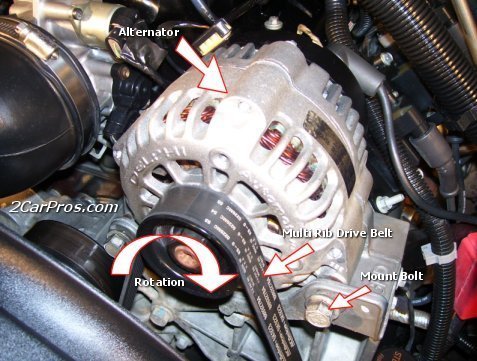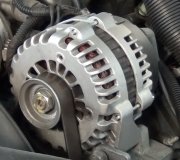WAIT! Holler back before you do anything. There are some easy tests you can do yourself. The most common problem is worn brushes. I don't know about a '98, but on '95 and older minivans, the brushes can be replaced without removing the alternator from the engine.
You will never need more than 60-80 amps from the charging system, so don't worry about going smaller on the output. The rating is the MAXIMUM value it can produce under a full load test, that's all. Going to a higher output can cause a problem if the system is load tested because it could produce more current than the wiring harness and fuse can handle.
As an example, two headlamps draw about 10 amps. Add tail lights, dash lights, radio, heater fan on low, and wipers on high, and the total goes up to less than 40 amps. The electric fuel pump draws about 8 amps and it takes another 5 amps to run the ignition and injector systems. To prevent damage to the battery, charging current is limited to under 20 amps, and that's only for a short period of time.
Only a few years ago, a 55-65 amp alternator was more than sufficient to meet the needs of any car, but with all the unnecessary, complicated, and unreliable computers on modern cars, more current is required. Even so, each computer only draws an amp or two. The reason for the excessive extra output is to prevent system voltage, (pressure), from dropping too low. Computers are very sensitive to changes in supply voltage.
Think of a water pump that can put out 12 pounds of pressure, and one gallon of flow per minute. If you turn down current flow to one half gallon, the pressure is still maintained at 12 pounds. But if you try to draw more than the pump's capacity, pressure will drop. What happens to the flow out of a garden hose if the pressure drops?
This is why alternators must be able to produce more than just the maximum demands of the vehicle. After you add power seats and windows, a rear window defogger and wiper, and anything else you can think of, there still needs to be plenty of reserve current capacity to allow the voltage to be maintained at the proper level. Using an alternator with a maximum output of 10-30 amps less than what you have now is very unlikely to cause a problem.
Before you make a final decision, find a cheap digital voltmeter or a test light, then holler back.
Caradiodoc
caradiodoc@verizon. Net
Saturday, April 11th, 2009 AT 3:57 AM



